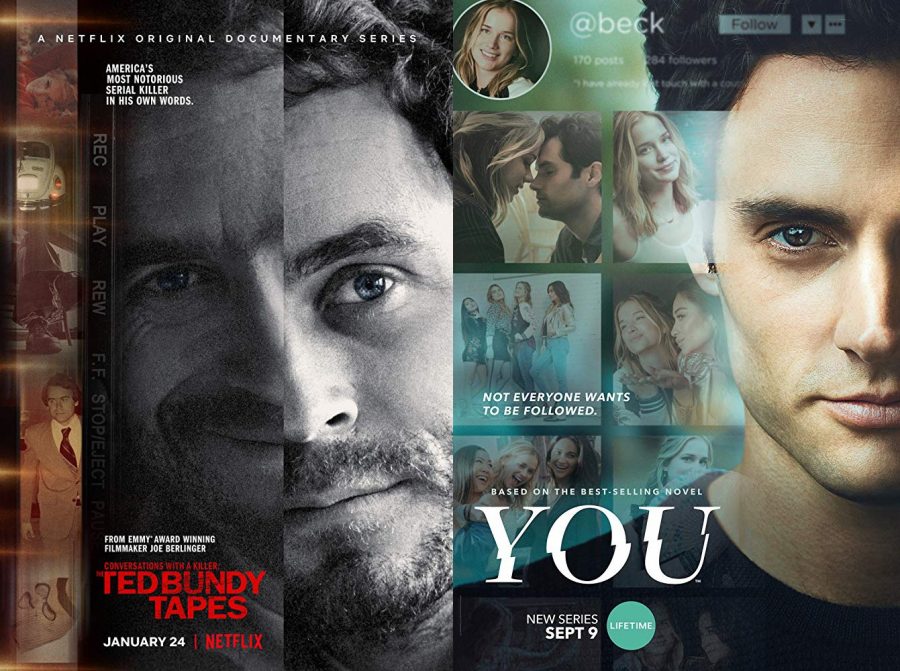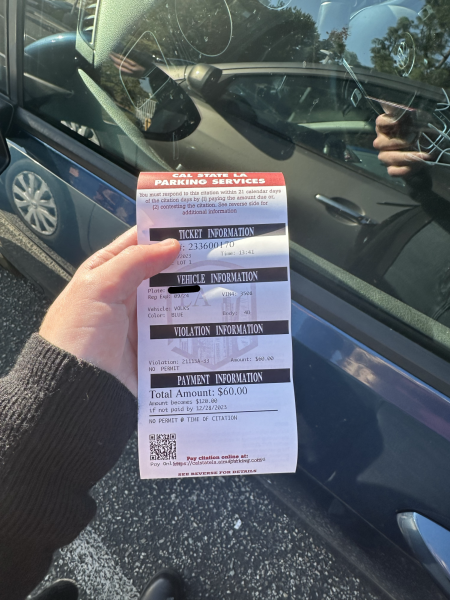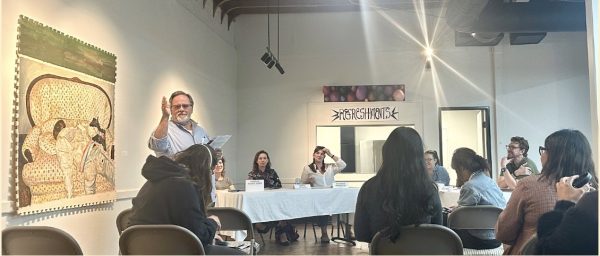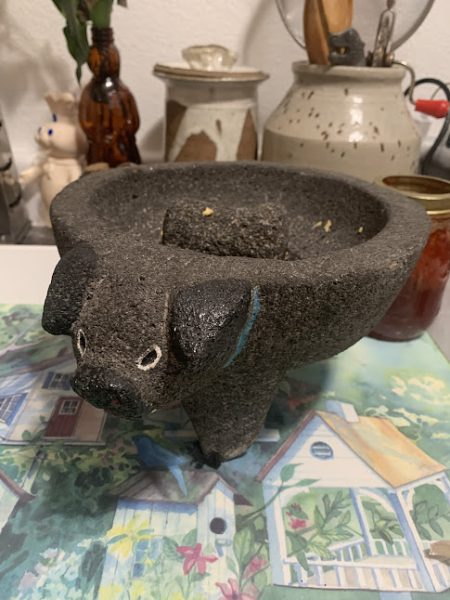Too Hunky to Hate: Why We Thirst Over Serial Killers
(Left) Conversations with a Killer: The Ted Bundy Tapes and (Right) You
Film and media narratives love to pitch us pseudo-edgy male characters as desirable and sympathetic, even at the expense of the women they obsess over. One such character can be found in the Netflix show, “You”.
By day, main character Joe Goldberg is a seemingly benevolent bookstore manager and self-proclaimed ‘nice guy’ who cares for his neighbor’s neglected child. By night, he is a snarky and manipulative murderer who stops at nothing to attain his latest female obsession: Beck.
After a brief interaction, Joe immediately begins constructing a romantic narrative of their relationship, one in which he is the savior and she is the “damsel in distress”, a victim of both herself and circumstance. His gross idealization dehumanizes Beck, reducing her to a mere object of desire.
Following weeks of careful puppeteering, Joe has finally attained his goal: a date with Beck. Yet, while Beck eagerly expresses her passion for writing, his narration drones her out, and he focuses in on the idea of what she brings to his “story”, showing a total disregard for her own personal desires.
Similarly, Netflix’s latest pseudo-documentary, “Conversations with a Killer: The Ted Bundy Tapes”, highlights the ramifications of this entitlement in fueling male violence against women.
When asked why he had chosen young female victims, Bundy described women as “merchandise” and “accessories”, meant to be admired by and subservient to men.
Amid the violence of his crimes, he enjoyed public allure and stardom. Enamored by his “boyish good looks” and “upstanding character”, both police and the public dismissed the overwhelming amount of evidence that pointed to him as the killer.
As Alice Bolin writes, in an essay collection entitled Dead Girls, she explores common true crime tropes, “…we choose to believe our idea of ‘the all-American young man’ over flags as red as blood.”
As public narrative would tell it, Bundy was a certified Prince Charming, who lured women to his volkswagen carriage and treated his “dates” to the best of Home Depot: rope, cloth restraints and a matching gag.
Our obsession with male enactors of violence is, as portrayed in these two productions, clearly connected to both our romanticization of violent men and our timeless suspicion of female agency.









